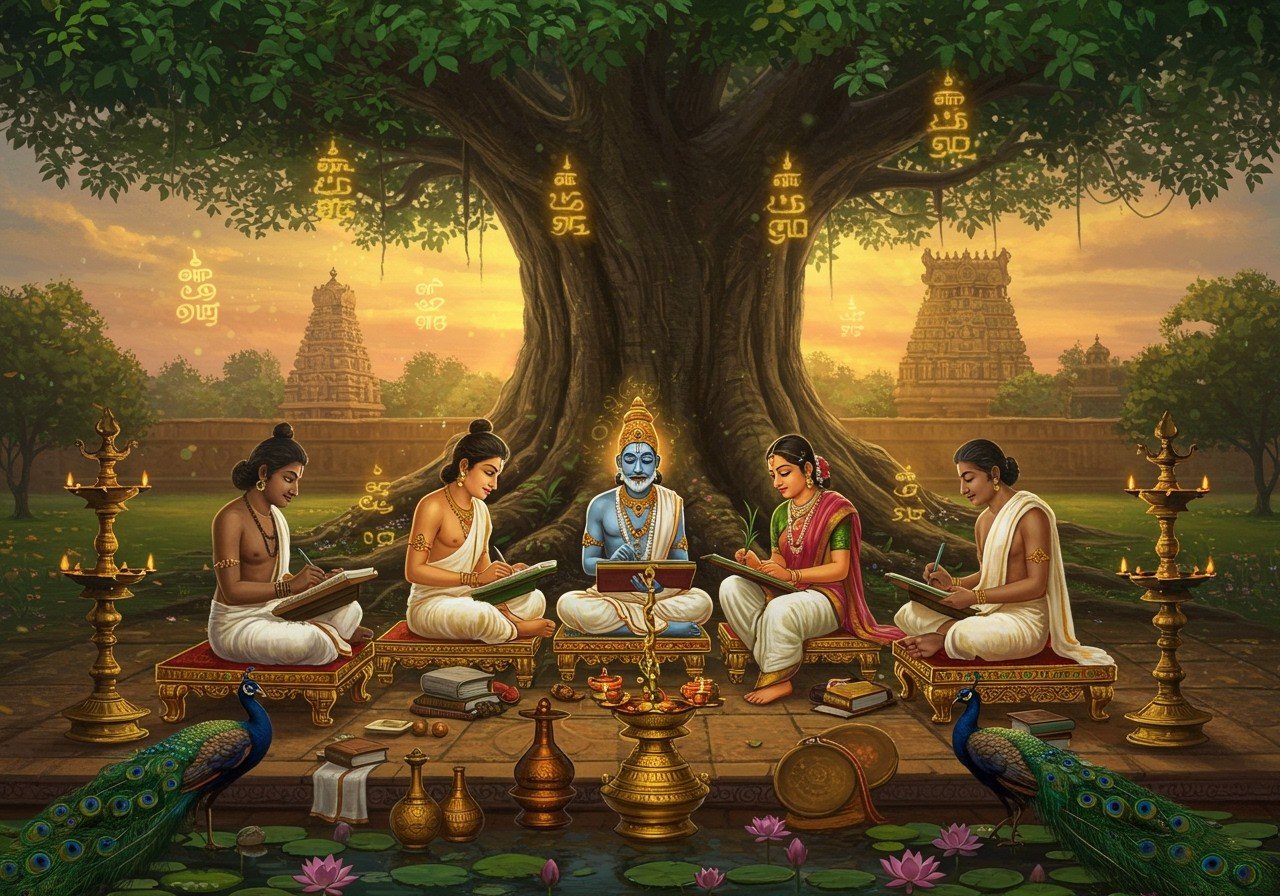
Sangam Literature, encompassing ancient Tamil literary works, holds a significant place in India’s cultural history. Spanning from 300 BCE to 300 CE, this body of work offers profound insights into the social, political, and cultural dynamics of the Tamil people. Studying Sangam literature not only enriches our understanding of ancient Tamil culture but also reveals sophisticated literary traditions prevalent in South India during this era. This blog post delves into the authorship, composition, and key themes of Sangam literature, exploring who wrote these texts, when and where they were composed, and the essence of their content.
Who Crafted Sangam Literature?
The authorship of Sangam literature is attributed to a diverse group of poets, encompassing kings, nobles, and commoners. Notable poets such as Thiruvalluvar, Kabilar, and Avvaiyar stand out for their significant contributions. Thiruvalluvar’s ‘Tirukkural’ is particularly renowned for its ethical and philosophical insights, offering timeless wisdom that resonates even today. Female poets like Avvaiyar played a vital role, enriching the literature with their unique perspectives and voices. The Sangam poets often hailed from diverse social strata, reflecting the inclusive nature of the literary tradition.
Patronage from Tamil kings and chieftains facilitated the creation and preservation of these works. The presence of anonymous authors adds an element of mystery to the corpus. The collaborative spirit of Sangam literature is evident, with many poems being responses to or inspired by other works within the collection.
When Was Sangam Literature Penned?
The Sangam period is traditionally classified into three distinct phases: the Early, Middle, and Late Sangam periods. The Early Sangam is believed to have spanned from 300 BCE to 100 CE. The Middle Sangam covers the period from 100 CE to 250 CE. The Late Sangam extends from 250 CE to 300 CE. These periods correspond to the first, second, and third Sangams, literary academies believed to have existed in ancient Tamil Nadu. The timeline of Sangam literature is reconstructed through linguistic analysis, internal textual references, archaeological evidence, and inscriptions. Understanding the historical context of the Sangam period is essential for grasping the themes and subjects explored in the literature.
Where Was Sangam Literature Composed?
Sangam literature was primarily composed in the Tamil region, encompassing present-day Tamil Nadu and parts of Kerala, Karnataka, and Andhra Pradesh. Madurai is often associated with the Sangam academies where poets congregated. Coastal areas, hilly terrains, and fertile plains of the Tamil country are frequently depicted in the literature, reflecting the geographical diversity of the region.
Major urban centers like Kanchi, Uraiyur, and Korkai played a vital role in the literary activities of the time. The Sangam texts often describe the landscapes and natural beauty of these regions, offering vivid depictions of ancient Tamil geography. The composition of Sangam literature across multiple locations underscores the widespread nature of this literary tradition.
Themes and Content of Sangam Literature
Sangam literature explores a wide spectrum of themes, from love and war to ethics and philosophy. The Akam (interior) genre delves into personal relationships and emotions, while the Puram (exterior) genre focuses on war, politics, and public life. Ethical and moral teachings are prominent in works like the ‘Tirukkural’, providing guidance on virtuous living. The literature offers detailed accounts of social customs, traditions, and daily life in ancient Tamil society. The depiction of nature and landscapes is a distinctive feature of Sangam poetry, showcasing the poets’ deep connection with their environment. Historical events and figures are often referenced, offering valuable glimpses into the past. The use of metaphors and similes adds to the literary richness of the texts.
Significance and Legacy of Sangam Literature
Sangam literature stands as a cornerstone of Tamil culture and heritage. It provides a window into the ancient Tamil way of life, beliefs, and values. The ethical teachings found in texts like ‘Tirukkural’ continue to influence Tamil society and beyond, offering timeless wisdom. Sangam literature has inspired countless subsequent literary works and traditions in Tamil, shaping the course of literary development.
The preservation and study of these texts are vital for maintaining Tamil linguistic and cultural identity. Modern Tamil literature and arts frequently draw inspiration from Sangam themes and motifs. The legacy of Sangam literature highlights the enduring relevance of ancient wisdom in contemporary times.
Hinduism’s Global Reach: A Look at Its Diverse Traditions
Hinduism: A Complete History and Origin
Hindu Temple Architecture: Significance and Symbolism
Poojn.in: Connecting You with the Divine through Authentic Puja Items
At Poojn.in, we understand the significance of honoring deities and engaging in spiritual practices. As India’s leading provider of cultural goods and services, we offer a wide selection of authentic puja items to enrich your connection with the divine. Whether you seek exquisite idols, fragrant incense, or traditional puja accessories, Poojn.in has everything you need to create a sacred space in your home.
Explore our collection of:
- Brass Idols: Beautifully crafted brass idols of various deities, meticulously designed to bring divine presence into your home. We offer a range of sizes and styles to suit your preferences and altar space. Explore our Brass Idols
- Incense and Dhoop: Create a serene atmosphere with our selection of traditional incense and dhoop. Choose from a variety of fragrances to enhance your meditation and puja rituals. Discover our Incense Collection
- Puja Accessories: Find all the essential puja accessories you need, from diyas (lamps) and kalash (water vessels) to thalis (plates) and bells. Our products are crafted with high-quality materials to ensure durability and authenticity. Browse our Puja Accessories
Visit Poojn.in today and discover a world of sacred offerings to deepen your spiritual journey. We offer convenient online ordering and doorstep delivery across India, making it easier than ever to access authentic puja items.


